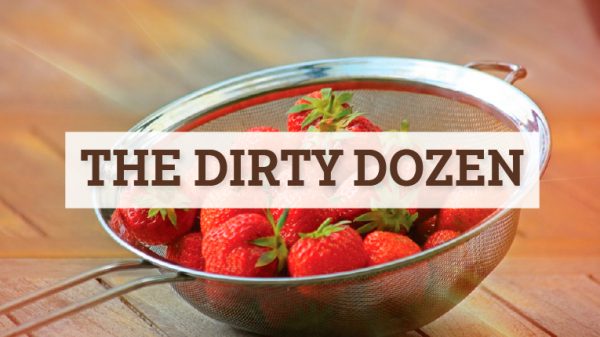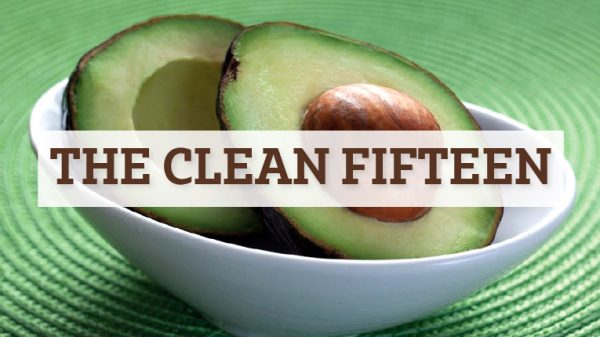It’s a constant battle:
How can I eat healthy?
How can I eat healthy on a budget?
And how can I eat healthy on a budget while also living a sustainable lifestyle as an urban homesteader? GAHHHHHHHHH…
Wuf. I feel ya.
It isn’t easy to eat healthy and sustainably in a world full of “quick and easy” meals—quite aptly named fast food—and inexpensive food trucked from hundreds of miles away.
In the last chapter, we discussed ways to grow some of our produce. In this chapter, let’s talk about cheap, healthy meals—the best, most sustainable, and budget-friendly ways to eat healthy as an urban homesteader from all the food sources you’ll encounter.
Healthy Food is Sustainable Nutrition
If you’re healthy, you will save money at the doctor and the pharmacy. Saving money at the pharmacy means ingesting fewer pharmaceuticals that are unsustainable to make and distribute and that damage your body’s ability to naturally fight diseases. And to be healthy—and therefore avoid the pharmacy—you need to have good nutrition.
In other words, a healthy body = sustainable nutrition = saving money.
When we eat non-organic, pesticide-heavy food, our bodies enter a toxic state. Our bodies don’t know what to do with the toxins, so they are pushed into our fat stores. Our cells build up thick walls to protect against the toxins in our bloodstream, so we cannot even absorb the necessary vitamins and minerals that our bodies need to function.
The same happens when we eat meat treated with antibiotics or drink water contaminated by chemicals from crop runoff and water treatment facilities.
All the food, water, pharmaceuticals, personal care products, and other environmental factors around us create a toxic equation. We live in a constant state of toxicity.
So, how do we rid our bodies of those toxins? We already talked about replacing toxic personal care products with natural, DIY products. Later in this series, we’ll discuss using herbal remedies to replace pharmaceuticals.
You May Also Enjoy: “8 Ways to Detox Your Personal Care Regime”
We can begin the detox process with some simple switches in our food and water intake.
- The first step in detoxing is to increase hydration. But don’t just start downing tap water. Most tap water contains chemicals that will continue adding toxins to the equation. Drink filtered water. Most nutritionists suggest that we each drink half of our body weight in ounces of water every day. One way to jump-start the detox process is to drink at least twenty ounces of water right when you wake up in the morning. Drinking water after a nighttime “fast” will get everything moving and help flush out toxins.
- Then, eat small portions of healthy foods multiple times throughout the day and drink lots of water to keep toxins moving through your body.
- Also, consider adding therapeutic-grade essential oils to your daily routine in your personal care products and cleaning supplies or to your diet in your food or water. Essential oils can help oxygenate your blood and can be absorbed in cells with even the thickest membranes.
It will take time for your body to detox, but once you do, you’ll find you’re able to eat less and that your body craves only healthy, organic food—food that will fill you up faster and leave you fuller for longer.
If you’ve been eating healthy, organic, toxin-free food for a while and your body seems to be going backward in some ways (e.g., if you have aches and pains or your digestion is arguing with you), DON’T STOP. That is your body’s way of telling you it is getting rid of the toxins it has been storing for years!
You’re almost there.
Keep feeding your body what it needs!
Budget for Organic, Budget for Sustainable
So what are those “healthy foods” we should eat small amounts of multiple times a day, and how can you fit them into your budget?
First, eat less meat. Meat is expensive, especially organically raised meat. Try observing a Meatless Monday for a few weeks; you may be surprised how much money you actually save by simply cutting out meat one day a week.
Buy in bulk. Many organic grocery stores or regular local grocery stores have an area where you can buy bulk dry goods. My local store even has a place where you can grind your own peanut butter and fill your own honey jars! Buy in bulk and make sure you can preserve your purchases for future use.
Eat seasonally. Out-of-season fruits and vegetables have to travel from areas of the country or world with different growing seasons, so they are going to be more expensive (and less sustainable because of their use of fuel). Find a seasonal produce calendar for your region and buy only produce that is in season. Buying local will be mostly “seasonal.” Keep that in mind and support your local gardeners!
Make room in your budget to purchase organic produce on the “Dirty Dozen” list. Remember that list?

Dirty Dozen
- Strawberries
- Spinach
- Kale, Collards, and Mustard Greens
- Grapes
- Peaches
- Pears
- Nectarines
- Apples
- Bell and Hot Peppers
- Cherries
- Blueberries
- Green Beans
Eating healthy means being careful not to ingest harmful chemicals like pesticides. Buying organic produce from the Dirty Dozen list—while slightly more expensive upfront—will save you money in doctors’ visits and pharmaceuticals over time.
You’ll be healthier, and your bank account will thank you for it.
Cheap, Healthy Meals From the Grocery Store
If you’re working with a particularly tight budget, you may decide to purchase some conventionally grown produce from your local grocery story. If that is the case, purchase less expensive, non-organic produce from the “Clean Fifteen” list.

Clean Fifteen
- Carrots
- Sweet Potatoes
- Mangoes
- Mushrooms
- Watermelon
- Cabbage
- Kiwi
- Honeydew Melon
- Asparagus
- Frozen Sweet Peas
- Papaya
- Onions
- Pineapple
- Sweet Corn
- Avocados
However, even produce on the Clean Fifteen list can be coated with some pesticides, so make sure you wash all produce you purchase from the grocery store.
Find or make your own produce wash that will remove as many potential pesticides and other toxins from the list as possible.
For produce with skin, soak for one hour in plain white vinegar. Then scrub gently and rinse.
For leafy greens, add two tablespoons of sea salt to two cups of water and a little lemon juice. Spray the cleaning solution on the greens, then soak them in a diluted vinegar solution for fifteen minutes. Rinse them in cold water to plump them up (they’ll probably wilt a little bit in the cleaning process), and then dry them completely using a salad spinner before storing them.
I like adding a few drops of lemon essential oil to the vinegar solution when cleaning produce. The extra cleaning power helps me feel safe eating non-organic produce. Also, the therapeutic-grade lemon essential oil is one of the least expensive essential oils, so it is a win for both your health and your budget!
Eating cheap, healthy meals from the grocery store doesn’t mean eating unsustainably. Many grocery stores purchase local produce. Ask the management what is locally grown if the products aren’t clearly marked. If you can’t afford organic produce, you may at least be able to afford local produce and then clean it at home.
Another way to eat sustainably from the grocery store is to cut down on your food waste. Set up your apartment homestead compost unit and dispose of your food scraps there. Then, use that compost in your patio or indoor garden.
You May Also Enjoy: “5 Cheap and Easy Solutions For Small-Space Composting”
Remember also to be conscious of your trash production. When you purchase produce from the grocery store or buy in bulk in the organic sections, make sure you have your reusable bags and avoid plastic and cardboard containers as much as possible.
Healthy, Budget-Friendly, and Sustainable Food Prep
One way you can be sure you’re saving money, eating healthy, and tracking exactly where every part of your meal is coming from is to cook meals at home.
My favorite recipes are the simple ones: roasting vegetables in the oven on a sheet pan, freezing fresh frozen fruit and making smoothies, or baking a whole chicken and using it for chicken quesadillas, chicken salad, and chicken soup throughout the week.
If you keep it simple, you’ll be more likely to adhere to your health-food plan, budget, and commitment to sustainability.
Meal Plan to Waste Not
If you don’t have one yet, create a weekly meal plan. Consider seasonal produce, evaluate what food your garden is producing now or what you have left of your garden preserves, and check ads for anything you have to purchase from local vendors or from the grocery store.
You May Also Enjoy: “15+ Ways to Reduce Your Carbon Footprint”
Make sure your meal plan doesn’t stretch your budget. Cheap, healthy meals are easiest to come by when you prepare them yourself at home, but if you’re still strapped, consider these tips for creating a budget-friendly, healthy, and sustainable meal plan:
- Eat less meat. For more reasons to go meatless, refer to my post on conserving fuel in your urban homestead.
- Eat less dairy. Animal products are expensive to produce—especially organically.
- Substitute half of your meat each week with vegetable proteins like beans and lentils.
- Buy in bulk when you can and preserve the products for future use. (For example, buy a whole chicken, bake it, and shred it. Store serving sizes in individual reusable containers and freeze whatever you don’t use that week for future meals.)
- Double your recipes and freeze your leftovers for an easy go-to meal when you’re strapped for time or lack the motivation to cook a fresh meal. It’s easy to cave and go to a restaurant when you’re feeling unmotivated to cook, and that lack of motivation will cost you money and sustainability.
- Make sure you preserve the food you buy so that it lasts as long as possible. Use raw vegetables and fruit early in the week so they don’t go bad, or freeze what you won’t use right away. Research ways to keep produce, nuts, dairy, etc., fresher longer and implement those practices in your kitchen.
“Healthy,” “Sustainable,” and “Budget-Friendly” are three terms that can easily be combined with a little planning and a commitment to the process.
Find more tips, tricks, and inspiration in The Urban Homesteader Facebook group! Join your fellow urban homesteaders here.
____________
References
https://wellnessmama.com/28/diy-fruit-and-vegetable-wash/
https://www.cornucopia.org/2015/03/10-ways-to-eat-organic-on-a-budget/
https://www.youngliving.com/en_US
https://foodbabe.com/2013/05/20/how-to-eat-organic-on-a-budget/
(Visited 4,917 times, 2 visits today)

The Grow Network is a global network of people who produce their own food and medicine. We’re the coolest bunch of backyard researchers on Earth! We’re constantly sharing, discovering, and working together to test new paths for sustainable living—while reconnecting with the “old ways” that are slipping away in our modern world. We value soil, water, sunlight, simplicity, sustainability, usefulness, and freedom. We strive to produce, prepare, and preserve our own food and medicine, and we hope you do, too!
Total
Shares
- SEO Powered Content & PR Distribution. Get Amplified Today.
- PlatoData.Network Vertical Generative Ai. Empower Yourself. Access Here.
- PlatoAiStream. Web3 Intelligence. Knowledge Amplified. Access Here.
- PlatoESG. Carbon, CleanTech, Energy, Environment, Solar, Waste Management. Access Here.
- PlatoHealth. Biotech and Clinical Trials Intelligence. Access Here.
- Source: https://thegrownetwork.com/cheap-healthy-meals/
